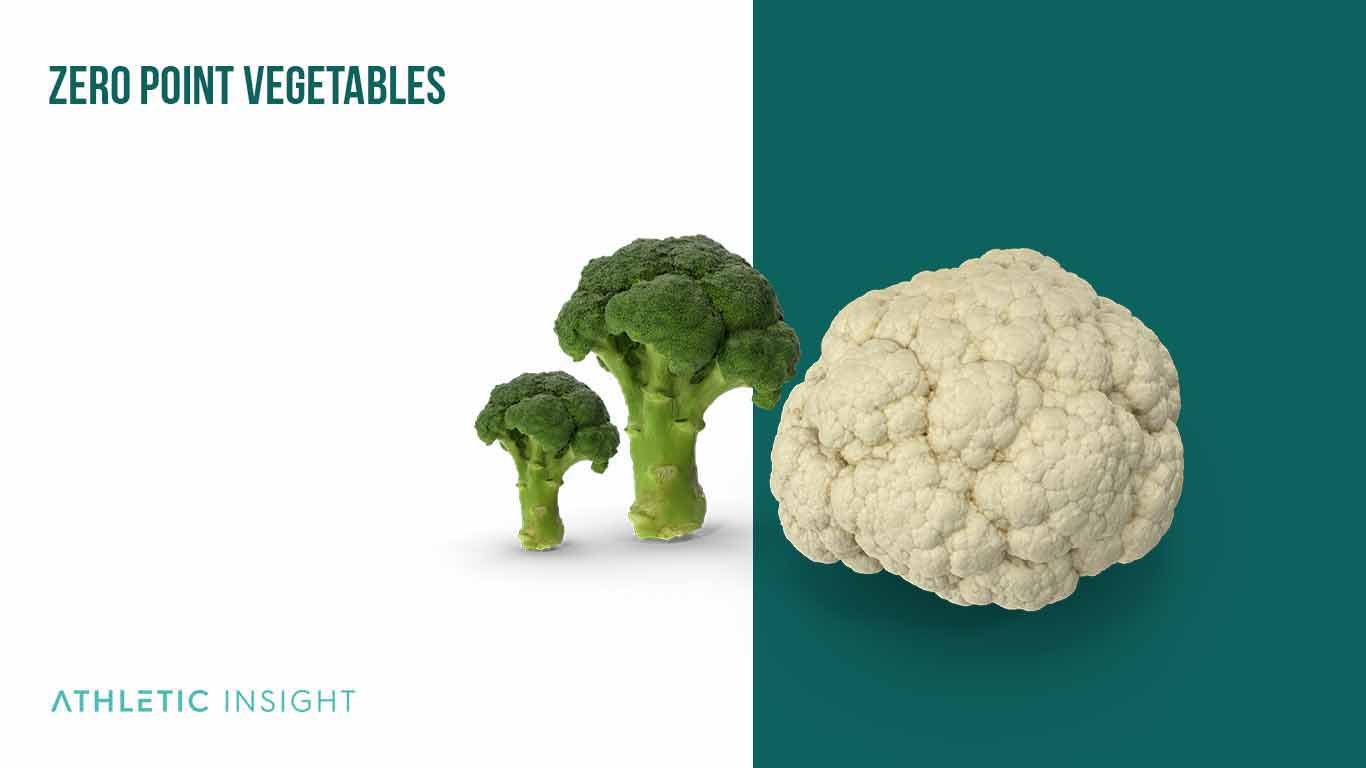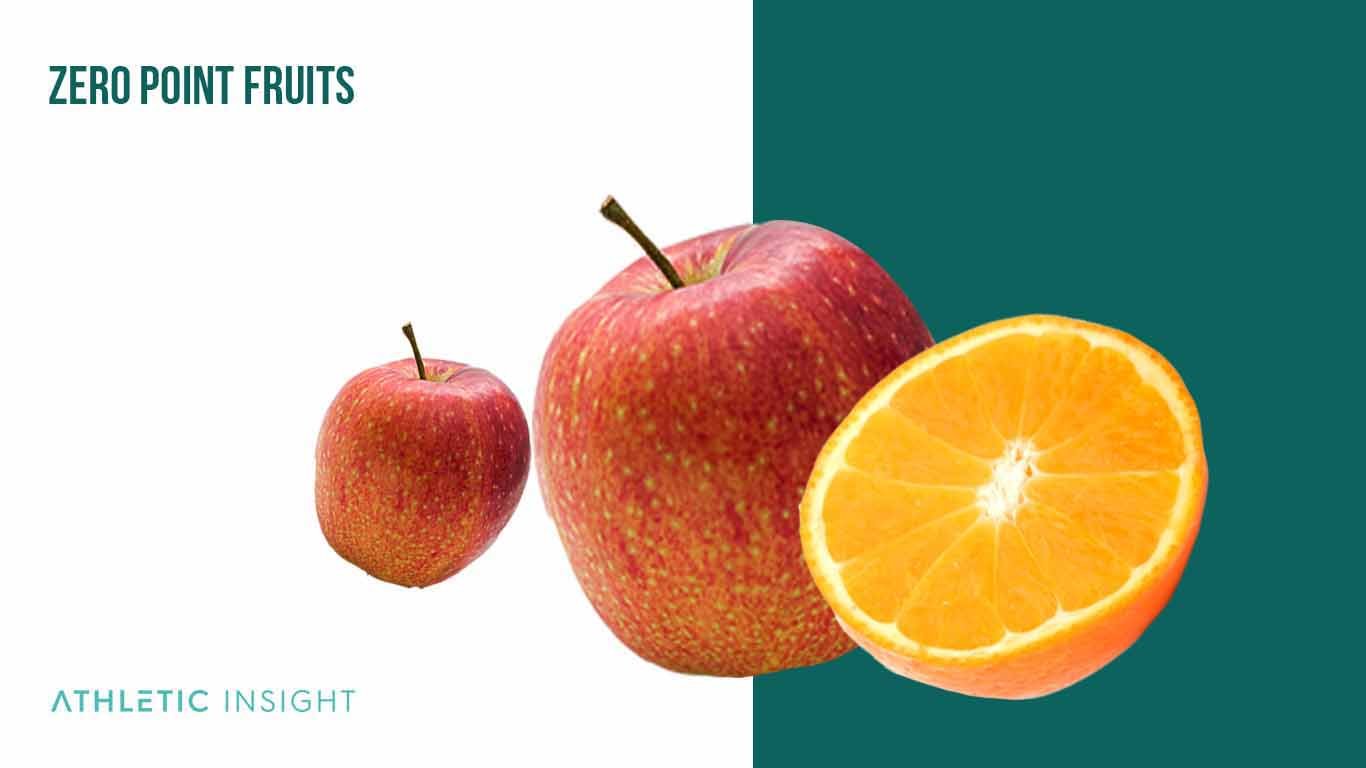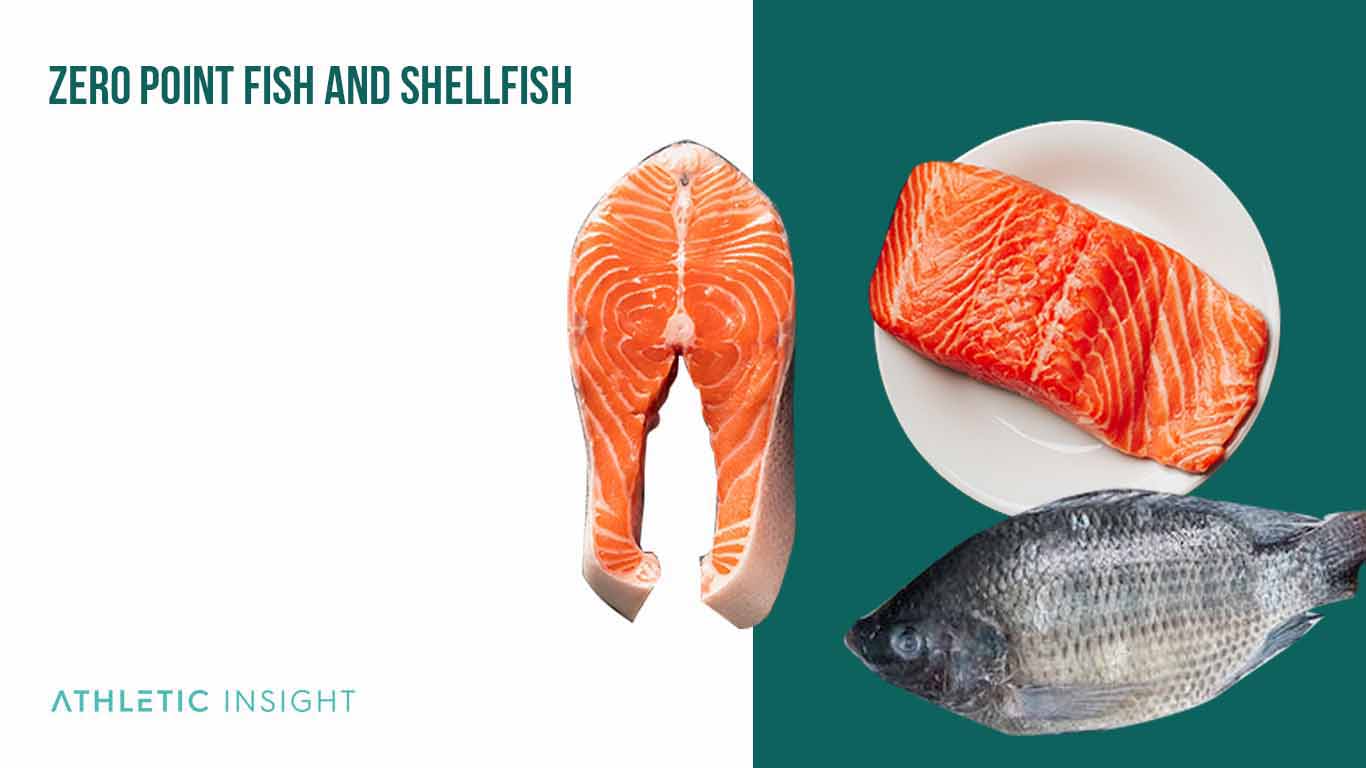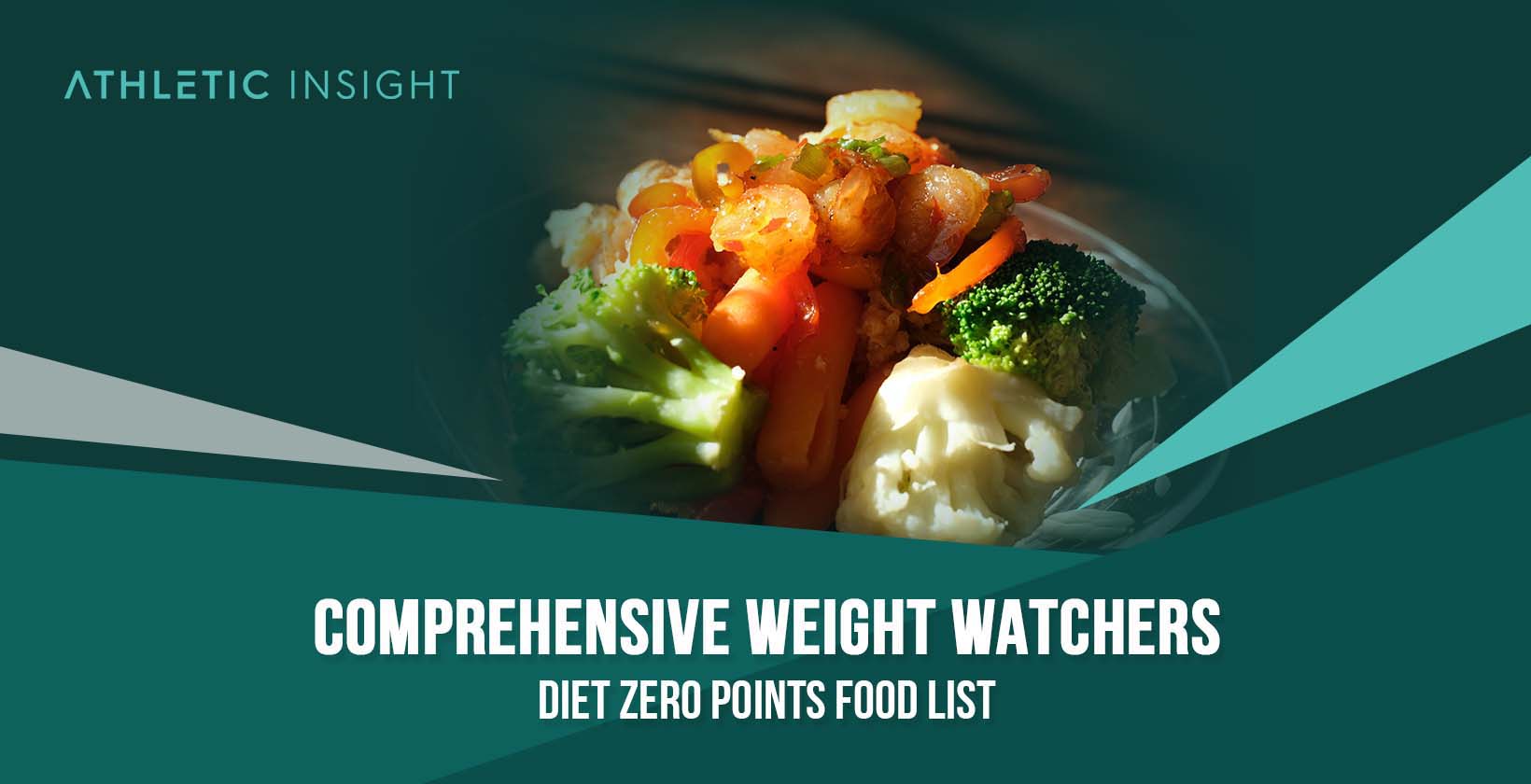Are you looking to lose weight and have a healthier diet that boosts your energy? If so, then you might want to check out the Weight Watchers diet. Weight Watchers is a healthy diet that helps you choose the best foods and remain active.
The Weight Watchers food list includes a SmartPoints system and a Weight Watchers fast food points scale that awards every food, beverage, and meal a certain amount of points. Every day, you have only a maximum number of points to reach on this diet.
The goal of the Weight Watchers program is to lose one or two pounds per week. Keep reading to learn all about the Weight Watchers food points system.
1. Zero Point Vegetables
You can eat as many zero-point foods as you desire on the Weight Watchers diet. Zero Point vegetables that you can eat tons of include the following options.

- Arugula
- Broccoli
- Cauliflower
- Garlic
- Kale and other greens
- Onions
- Chickpeas and black-eyed peas
- Radishes
- Shallots
- Tomatoes
The health benefits of vegetables from this list are the many nutrients they have, such as vitamin A, vitamin C, fiber, potassium, and folate. The vegetables high in potassium can help you maintain healthy blood pressure levels.
You don’t need to track or measure zero-point foods, which means you can have as many servings of each zero-point vegetable on this list. You can gain as much as 4 or 5 grams of protein for each cup of vegetables listed above. Furthermore, vegetables do not have any fats.
2. Zero Point Fruits
The typical zero point fruits that you can consume as much of as you want on the Weight Watchers zero point food list are as follows.

- Apples
- Blackberries, strawberries, and blueberries
- Clementines
- Grapefruit
- Honeydew melon
- Kiwifruit
- Mangoes
- Oranges
- Papayas
- Starfruit
A diet high in fruits can help prevent heart disease, diabetes, inflammation, and cancer risk. This is due to the antioxidants present in fruits, including flavonoids. Fruits are also high in essential nutrients like vitamins, minerals, and fiber.
Once again, you can have as many servings as you prefer for the zero-point fruits on this list. One cup of fruits can provide you with anywhere from 1 to 5 grams of protein. Fruits are also very low in fat, with avocados being the only exception. However, avocados are not on the list of zero-point fruits.
3. Zero Point Whole Grains
You will find that you can even consume zero-point whole grains as part of the Weight Watchers zero-point foods. Some zero-point whole grains include the following options.
- Barley
- Brown rice
- Buckwheat
- Bulgur
- Farro
- Quinoa
- Rye berries
- Wheat berries
- Whole-wheat couscous
- Wild rice
These particular whole grains have plenty of health benefits, such as reducing the risk of type 2 diabetes, obesity, heart disease, and some types of cancer. Whole grains have plenty of antioxidants, protein, fiber, and some vitamins and minerals.
On the Weight Watchers diet, you don’t need to track the number of whole grains you consume from the list above. Some whole grains are high in protein. For example, one cup of buckwheat has 22.5 grams of protein. Whole grains like bulgur are low in fat.
4. Zero Point Oats and Oatmeal
Plain oats and oatmeal are zero-point foods as part of the Weight Watchers food scale program. The type of oats that are part of this category includes the following options.
- Plain instant oatmeal
- Quick-cooking regular oats
- Quick-cooking steel cut oats
- Rolled oats
- Steel-cut oats
- Rolled whole grain muesli
- Plain oatmeal
You can have as many cups of these oatmeal options as you like while on the Weight Watchers diet. Oats have plenty of fiber, vitamins, and minerals, which can improve digestion and reduce your risk of heart disease. It also drops your risk of high blood pressure.
There are also 6 grams of protein and 3.2 grams of fat per cup of oatmeal.
5. Zero Point Poultry
You can also choose to eat zero-point poultry options as part of the Weight Watchers 0-point foods. The list of zero-point poultry products includes the following options.
- Skinless chicken breast
- Skinless chicken tenderloin
- Ground chicken breast
- Jerk chicken breast
- Chicken satay without peanut sauce
- Ground turkey breast
- Skinless turkey tenderloin
- Skinless turkey breast
- Smoked turkey breast
As long as you’re careful about following these specific options and don’t add any extra ingredients, you can enjoy as much intake of these poultry options per day as you like. The health benefits of poultry include gaining a great source of protein, iron, zinc, iodine, and vitamins.
There are 26 grams of protein and 56 grams of fat in eight ounces of chicken or turkey.
6. Zero Point Beans, Peas, and Lentils
The Weight Watchers free foods with zero points also include peas, lentils, and beans. The type of products that are part of the zero point foods in the category is listed below.
- Chickpeas
- Green beans
- Black beans
- Kidney beans
- Lima beans
- Pea shoots
- Peapods
- Black-eyed peas
- Chickpeas
- Lentils and lentil sprouts
You can eat as many of these peas, beans, or lentils each day and won’t need to track them when following a list of Weight Watchers foods and their points. These particular foods are high in vitamins and minerals, including potassium, magnesium, iron, and folate. One cup of chickpeas can have as much as 12 grams of fat and 39 grams of protein.
7. Zero Point Eggs
Eggs are also zero point foods as part of the Weight Watchers food point system. Some of the typical zero-point egg products that are part of the Weight Watchers diet include the following options.
- Egg substitutes
- Egg whites
- Whole eggs, including yolks
Feel free to have as many eggs or egg whites as you like when on the Weight Watchers diet. The health benefits of eggs include a high source of nutrients, eye health protection, weight management, and heart health support. There are 6 grams of protein and 5 grams of fat in one large boiled egg.
8. Zero Point Potatoes and Starchy Vegetables
The Weight Watchers diet also includes a variety of potatoes and starchy vegetables, such as the following options.
- Acorn squash
- Baby potatoes
- Fingerling potatoes
- Jerusalem artichokes
- Idaho potatoes
- Sweet potatoes
- Purple potatoes
- Red potatoes
- Yams
- Yukon gold potatoes
The Weight Watchers purple zero point foods include mashed potatoes as well as brown rice and whole-wheat pasta. You won’t need to track or measure these zero-point potatoes and starchy veggies, as you can still lose weight if you consume these foods. Starchy vegetables still have plenty of antioxidants such as vitamin C and beta-carotene.
These foods can reduce the risk of age-related blindness and cataracts. Further, these veggies can improve skeletal health and promote hair and skin health. The typical potato has 0 grams of fat and about 5 grams of protein.
9. Zero Point Fish and Shellfish
The Weight Watchers blue zero point foods include zero-point fish and shellfish, such as the following options.

- Anchovies and sardines
- Sea bass
- Carp
- Catfish
- Halibut
- Herring
- Rainbow trout
- Salmon
- Striped bass
- Swordfish
- Tilapia
You can also enjoy shrimp, cuttlefish, crab, and lobster as zero-point Weight Watcher foods. Since these are zero-calorie foods, you don’t need to track the products listed above as part of your diet.
Seafood and fish are full of vital nutrients like omega-3 fatty acids, B vitamins, and A vitamins. Fish is also healthy for your eyes, immune system, and brain. For every 3 ounces of salmon, you can get 19 grams of protein and 10 grams of fat.
10. Zero Point Yogurt and Cottage Cheese
Another zero-point food category in the Weight Watchers diet involves yogurts and cottage cheese. The type of products you can eat in this category includes the following options.
- Nonfat, plain Greek yogurt (unsweetened)
- Nonfat and unsweetened plain yogurt
- Plain soy yogurt
- Cottage cheese
You can eat as much of these zero-point foods as you like during the day on the Weight Watchers diet. Yogurt is healthy due to its probiotics, which can improve your gut microbiota. Plain yogurts also have plenty of calcium, vitamins, and protein.
One container of Greek yogurt has 17 grams of protein and 0.7 grams of fat.
11. Zero Point Corn and Popcorn
Corn and popcorn are part of the zero point category on the Weight Watchers food points list. The type of foods from this category include the following options.
- Air-popped popcorn without oil, butter, or sugar
- Air-popped popcorn with only salt or other spice (not sugar)
- Popcorn kernels for popping at home
- Yellow corn
- Sweet corn
- White corn
- Canned corn
- Corn on the cob
You can add as much corn and popcorn to your daily diet, and you won’t need to track it as part of the Weight Watchers diet. Popcorn is a good source of polyphenols, which are antioxidants that improve blood circulation and boost digestion.
Furthermore, 1 ounce of popcorn has 3.1 grams of protein and 1.2 grams of fat. As such, popcorn is low in fat.
12. Zero Point Tofu and Tempeh
Tofu along with tempeh also has zero points as part of the Weight Watchers purple plan food list. If you like tofu, you can have as much as you like as part of this category in the Weight Watchers diet. You can choose smoked tofu, any variety of tofu, and tempeh.
This is a healthy food because it is low in calories, gluten-free, and can even lower your LDL cholesterol levels. In half a cup of tofu, you will consume 10 grams of protein and 6 grams of fat.
13. Zero Point Whole Wheat Pasta
You’ll find that even whole wheat pasta is part of the Weight Watchers zero point food list. However, the pasta and noodles need to be made from legumes and whole-grain flour.
Whole wheat pasta can lower inflammation rates, improve digestion, and lower your risk of heart disease, stroke, and obesity. One cup of whole wheat spaghetti includes 7.5 grams of protein and 0.8 grams of fat. As such, whole wheat pasta is low in fat.
How To Prepare a Weight Watchers Meal Plan?
A sample menu for a Weight Watchers meal plan includes the following.
Monday: egg and bacon slider for breakfast, chicken, grape, and toasted walnut salad for lunch, and steak with white beans and broccoli for lunch
Tuesday: steel-cut oatmeal with pomegranate and pistachios for breakfast, chicken salad whole wheat sandwich with one ounce of pretzels for lunch, a seafood bowl of shrimp, carrots, cabbage, edamame beans, brown rice, and ginger salad dressing for dinner
Wednesday: egg and bacon slider with fresh fruit for breakfast, a slice of cheese pizza with a side salad including croutons and Italian dressing for lunch, and chicken, peach, and fig salad for dinner
Thursday: nonfat plain Greek yogurt with fresh fruit and almonds for breakfast, veggie burger with hummus and fresh vegetables for lunch, roasted salmon with chickpeas, bell peppers, and zucchini for dinner
Friday: waffles with ricotta and blueberries for breakfast, lentil-veggie soup with a beef-steak wrap in a flour tortilla (including tomatoes, onions, and pickles) for lunch, and Greek chicken with orzo, tzatziki, and bell peppers for dinner
Saturday: Greek yogurt with blueberry sauce for breakfast, California roll, spicy tuna roll, miso soup, and edamame for lunch, and stuffed pasta shells with roasted vegetables for dinner
Sunday: a single bowl of eggs and spinach for breakfast, slow cooker fiesta chicken soup for lunch, and turkey meatloaf with mashed potatoes for dinner along with baked apple chips as a snack
You can also consume wheat products while on a Weight Watchers diet, but it is unlikely that all these wheat products will have zero points. The most expensive diets include the South Beach diet, a vegan diet, and the Zone diet.
How Many Calories Can You Eat While on a Weight Watchers Diet?
The Weight Watchers food plan involves a point system where calories are part of the deal. Yet, the carbohydrates, fat content, fiber, and protein from your food are also accounted for in the Weight Watchers points system.
It’s best to consume at least 1,200 calories on the Weight Watchers diet to keep one’s metabolism from declining. Furthermore, to lose at least one pound per week, you’ll need to eliminate 500 calories per day from your usual eating patterns. Therefore, if you normally consume 2,000 calories per day, you’ll need to switch that to 1,500 calories.
How Much Fat Should You Consume Daily on a Weight Watchers Diet?
The type of fat you consume daily is important when it comes to the Weight Watchers fast food points system. For example, saturated fat should be under 10 percent of your entire daily calorie intake. You should avoid trans fats altogether.
Both monounsaturated and polyunsaturated fats are healthier for you. High-fat healthy foods include eggs, nuts, fatty fish, and seeds. For instance, monounsaturated fats are found in olive oil, peanut butter, and avocados. Polyunsaturated fats are found in salmon, sardines, sunflower seeds, and walnuts.
Women are also recommended to drink 11 cups of water per day, and men should drink 15 cups of water per day on the Weight Watchers diet.
How Much Protein Should You Consume Daily on a Weight Watchers Diet?
According to Weight Watchers, you should have protein consumption that takes up about 20 percent to 25 percent of your daily calories. As such, if you have a 1,200-calorie intake, you should eat about 60 to 75 grams of protein per day.
High protein foods include eggs, almonds, chicken breast, Greek yogurt, cottage cheese, lean beef, fish, and lentils.
How Many Carbs Should You Consume Daily on a Weight Watchers Diet?
Weight Watchers is a low-carbohydrate diet, so you’ll want to have about 25 percent of your daily calorie intake come from carbs, which is about 130 grams per day.
Weight Watchers fast food options require you to count points, which is similar to counting the carbs in the food you consume. Some high-carb foods you’ll want to avoid include pretzels, donuts, potato chips, and french fries.
What Can’t You Eat on Weight Watchers Diet?
No foods are off-limits on the Weight Watchers blue plan food list or the Weight Watchers diet as a whole, but you should limit the following foods.
- Sugar
- Grains
- Vegetable oils
- Trans fats
- Diet foods
- High-carb vegetables
- Starches
- High-carb fruits
- Legumes
What Is the Cost of the Weight Watchers Food List?
When considering purchasing the Weight Watchers food delivery plan, you can choose from multiple food delivery options, including Blue Apron or Magic Kitchen. The Weight Watchers plan costs roughly $5 per week, plus the cost of food. Generally, the most expensive diets include Jenny Craig and the Sugar Busters diets, while Weight Watchers is more affordable.
After reading this guide, you should have a great idea about the top zero-point foods you can consume. You’ll love the tasty food and losing weight every week!



